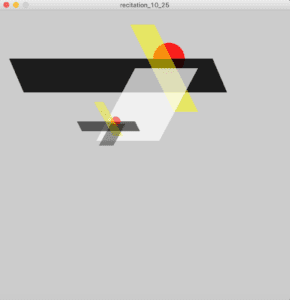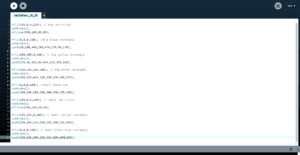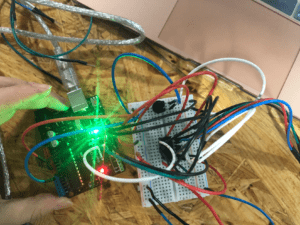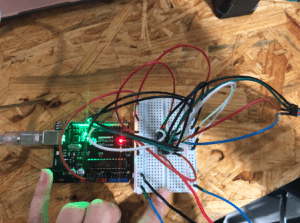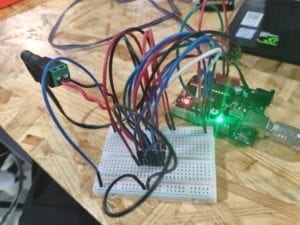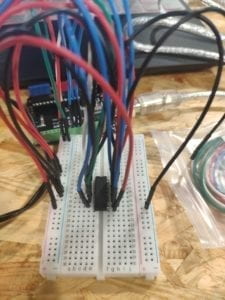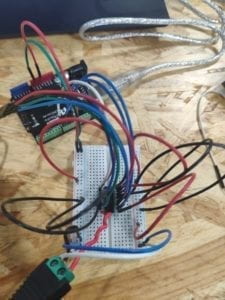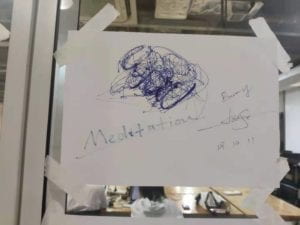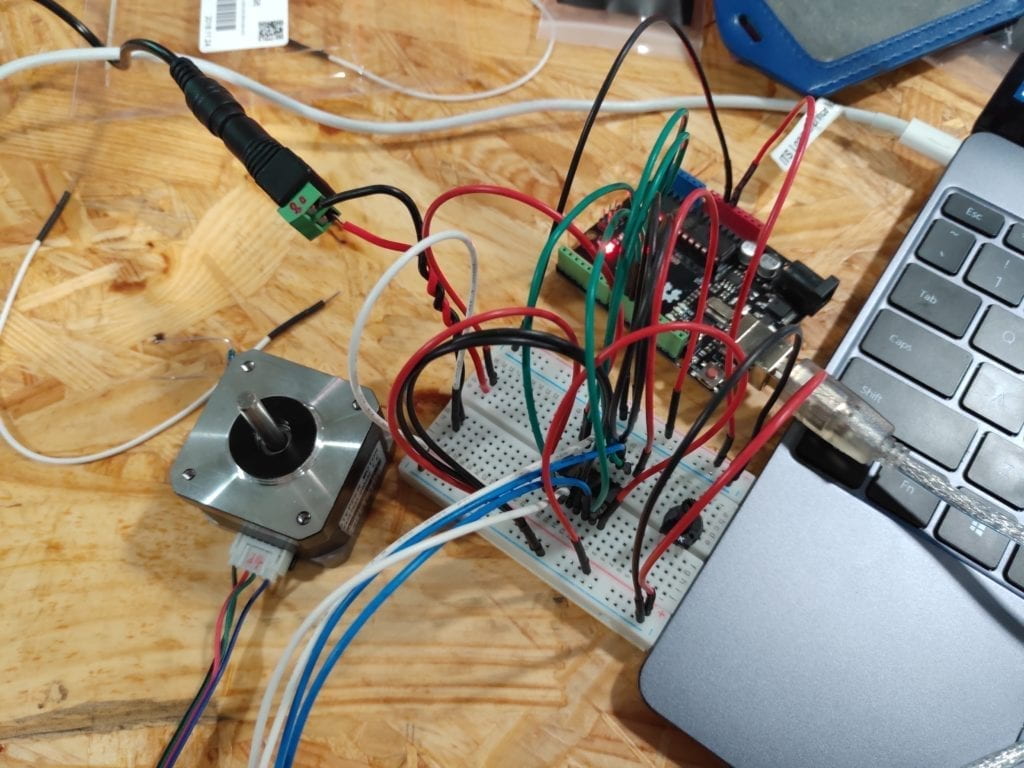introduction:
First, I’d like to tell you that this is the first time ,and unfortunately could not find a partner until near to the end of the class. So this blog prohaps look like a individual work.
Materials:
For Steps 1 and 2
1 * 42STH33-0404AC stepper motor
1 * L293D ic chip
1 * power jack
1 * 12 VDC power supply
1 * Arduino kit and its contents
For Step 3
2 * Laser-cut short arms
2 * Laser-cut long arms
1* Laser-cut motor holder
2 * 3D printed motor coupling
5 * Paper Fasteners
1 * Pen that fits the laser-cut mechanisms
Pape
Step 1: Build the circuit
I felt dizzy the first time I saw that image. It is the most complex circuit I have seen in the recitation. So the first thing I did is taking out the certain number of the similar color wires. Then I just build it according to the image. Though this actually is a non-thinking part, I am still on tenterhooks. After that, I asked an assistant for helping me check it (afraid of burning my computer),then copy the link…It didn’t run hot!
Step 2: Control rotation with a potentiometer
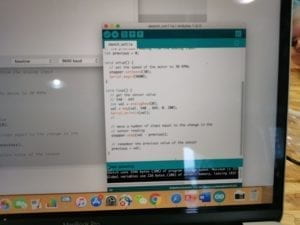
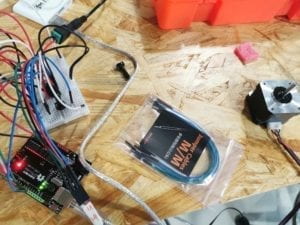
In the second step I really met a intractable trouble, my Potentiometer, which is should be 0~1023, but actually is only 540~645. That’s really puzzled me when I doing the map. There were more than one fellow came to help me to figured out what happened. we have tested many Potentiometers and at last found out that non of Potentiometers can get to the standard range…Because of that , I changed the the value in the map. Anyway, it did not have a big difference
Step 3: Build a Drawing Machine!
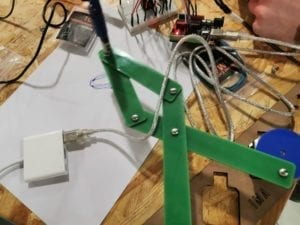
It was super easy to put the laser-cut arms together and used paper fasteners to fix them.Then I walked around to find someone build the last step with me. There comes Krabs when it near the end of of the class, but he haven’t known what the laser-cut arms used for! Though the class was over, we still insisted to have it down. I was so happy to see the pen begin to move itself!
Question 1:
what I want to create at the midterm project is a plants watering reminder which can let people communicate with their speechless friends. Using moisture sensors to sense the humidity of the soil and giving people light and sound to remind them water the plant . It can even give the suggestions on how much water we should add into the soil. The plant would move up and down when is soil is too dry, while if you put too much water into the soil, a servo will rotate a hand-shaped sign try to make you stop watering the plants.
Question2:
The interactive artwork Daniel Palacio Jimenez’s Waves. Motors in it rotate elastic strings to create complex sounds and visual vibration. It lead to the different shapes and movements, which make it looks like there is a solid object suspended in mid air when you takes the photos.
our project is actually controlled by people. In Waves, it seems that the movement is depend on sensing the movements of people. But they are both interactive, and result in an art work.

